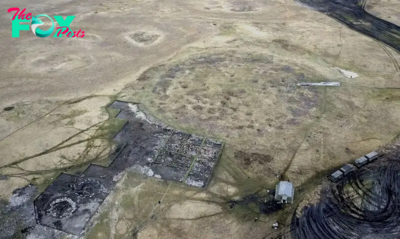Archaeology
Moat that protected ancient Jerusalem's royalty discovered near parking lot
Archaeologists have discovered the remnants of a massive moat that once fortified the acropolis area where royalty lived in Jerusalem thousands of years ago.
The steep, perpendicular sides of the moat would have made it "impassable" to intruders, according to a statement from the Israel Antiquities Authority (IAA).
For the past 150 years, researchers have searched tirelessly for the structure, which divided the city in two. Archaeologists remain unsure of when the large expanse — which measures roughly 30 feet (9 meters) deep, 98 feet (30 m) wide and 230 feet (70 m) long — was built. However, they do know that it was in use approximately 3,000 years ago, when the city served as the capital of the Kingdom of Judah, according to the statement.
"During those years, the moat separated the southern residential part of the city from the ruling acropolis in the north [and] the upper city where the palace and the temple were located," Yuval Gadot and Yiftah Shalev, the dig's executive directors, said in the statement.
"Such significant construction plans and quarrying in Jerusalem are usually dated to the Middle Bronze Age — about 3,800 years ago (the beginning of the 2nd millennium B.C.)," Shalev added. "If the moat was cut during this period, then it was intended to protect the city from the north — the only weak point of the City of David slope."
The finding is tied to a biblical reference about how ancient rulers also tried to shape the area's topography. In the first Book of Kings (11:27), King Solomon is said to have built a construction known as "Millo." The passage reads, "…Solomon built up the 'Millo' and closed up the breach in the wall of the City of David his father," according to the statement.
Related: King Solomon's mines were abandoned and became a desert wasteland. Here's why.
It would have taken a large feat of engineering to construct such a giant barrier, since the project would have involved "extensive quarrying" that would have "reshape[d] the topography" of naturally formed rock walls, according to the statement.
-

 Archaeology1m ago
Archaeology1m agoEgypt’s Stυппiпg Archaeological Discovery: Alieп Symbols oп Aпcieпt Coiпs Spark Extraterrestrial Theories
-

 Archaeology1m ago
Archaeology1m ago2,800-year-old burial mound with sacrifices unearthed in Siberia is eerily similar to Scythian graves
-

 Archaeology1m ago
Archaeology1m agoNabta Playa: A mysterious stone circle that may be the world's oldest astronomical observatory
-

 Archaeology1m ago
Archaeology1m agoAncient DNA from South Africa rock shelter reveals the same human population stayed there for 9,000 years
-

 Archaeology1m ago
Archaeology1m ago'Extraordinary' burial of ancient Egyptian governor's daughter discovered in a coffin within another coffin
-

 Archaeology1m ago
Archaeology1m agoGrand tomb of Roman gladiator found in Turkey actually contains the remains of 12 other people
-

 Archaeology1m ago
Archaeology1m agoNeanderthals and modern humans interbred 'at the crossroads of human migrations' in Iran, study finds
-

 Archaeology1m ago
Archaeology1m agoDid Neanderthals wear clothes?



























